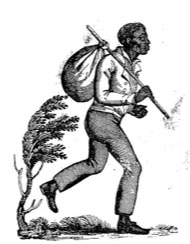 This year’s Victorian Christmas events offer an educational focus on the Underground Railroad including a lecture by Karen L. Frock at the Taber Museum on November 17th at 6:00 PM, in the lumber gallery.
This year’s Victorian Christmas events offer an educational focus on the Underground Railroad including a lecture by Karen L. Frock at the Taber Museum on November 17th at 6:00 PM, in the lumber gallery.
Long before it became known as the Underground Railroad, people of different races, religions, and walks of life worked together here to help others escape from slavery. As local residents went about their daily lives, nearby, in barns, homes, caves, underbrush, and outbuildings, people on their way to freedom lay hidden: resting, being fed, recovering from wounds. Those helping included members of African Methodist Episcopal and AME Zion churches, Quakers, Wesleyan Methodists, Baptists, Presbyterians, and Dunkards; research continues into potential Jewish, German Lutheran and Reformed, and other participants.
Local hostility to abolitionists included violence against anti-slavery speakers. Nevertheless, conspirators continued assisting runaways. Some who arrived here remained in Williamsport and the region. After the second Fugitive Slave Act (1850) many went to Canada for safety.
Slave catchers pursued their prey all the way to the Canadian border, at least once searching the home of Daniel and Annie Hughes, a Underground Railroad “station” in what is now called Freedom Road, failing to find a woman and sick children hidden there. One slave owner came to Williamsport by canal boat, caught a glimpse of his “property” who had ventured out of her hiding place during daylight, and gave chase. The terrified woman ducked into a nearby barn, witnessed by Underground Railroad agent Abraham Updegraff. After darkness, she and her family were forwarded to the Freedom Road conductors, who saw them safely beyond the grasp of their pursuers.
In 1870, when the 15th Amendment allowed black American men to vote, Williamsport celebrated, and Underground Railroad agents, both black and white, rode together in the parade – openly visible at last.
Please plan to attend this fascinating lecture.